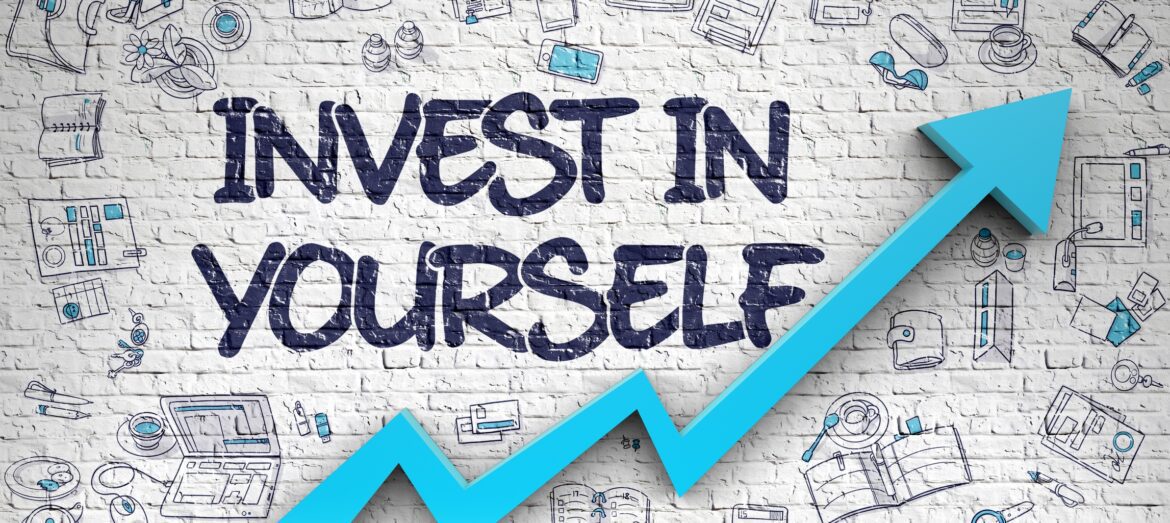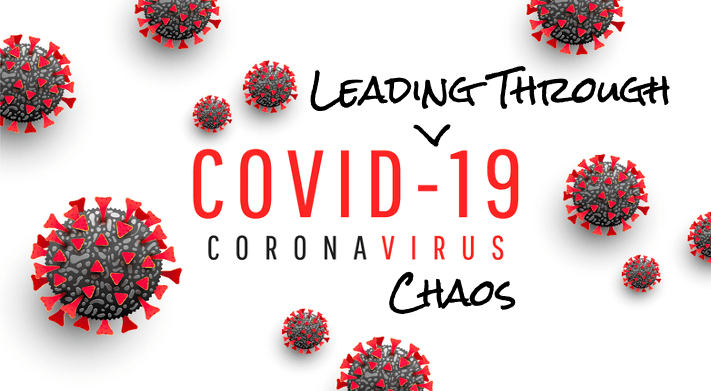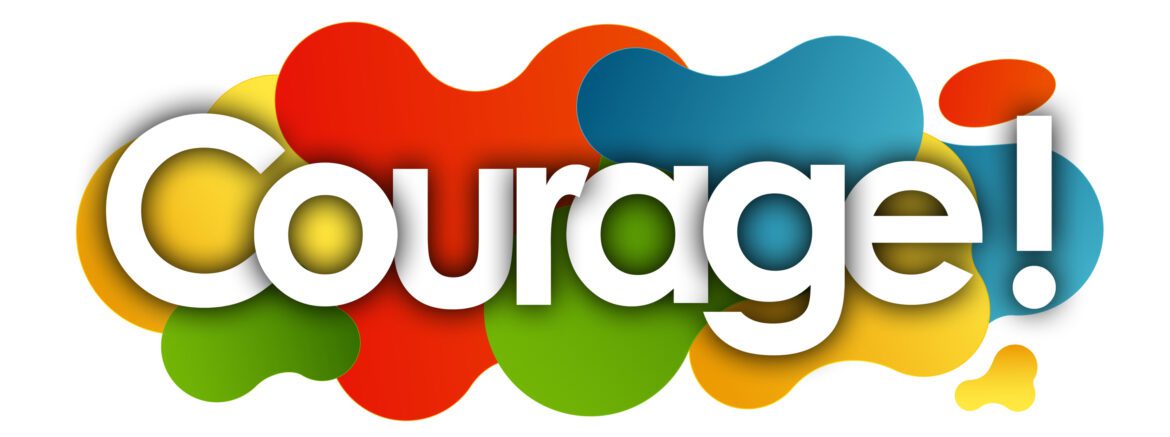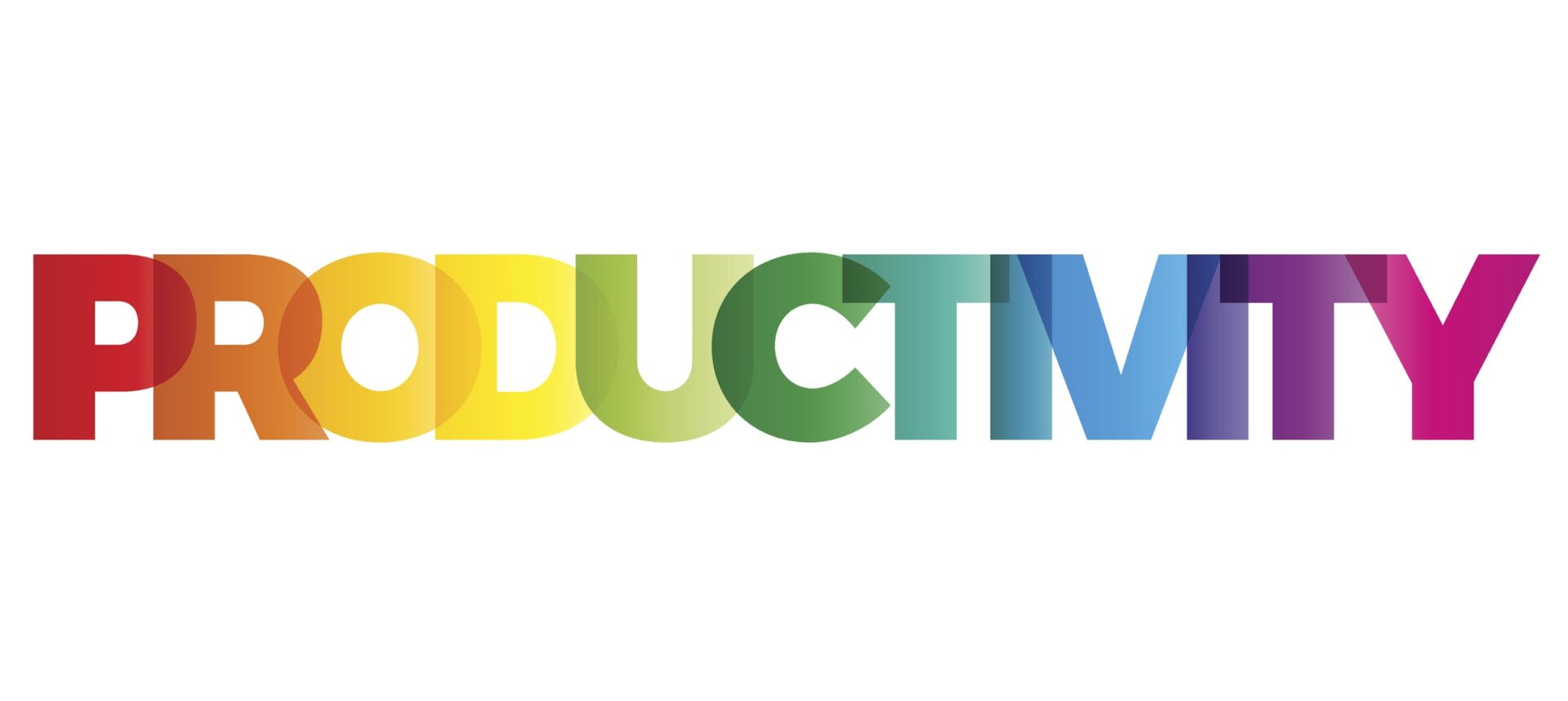Webinar: “Accelerating the Creation of a Combat Ready Team”
You’re invited to join us for our first “Leader to Leader” Webinar of 2024 where we invite leaders from a variety of contexts to share leadership best practices with our community of leaders.
Next month we will have a discussion on how to build high performing teams with Colonel Jason “Stinger” Houston, of the USAF. During this webinar, Col Houston will share how he assembled a new squadron of 60 “top gun” aviators within six weeks of deployment to the Middle East. What were his team development priorities, who were the key players, and how did he ultimately create a high-performing combat ready team in record time?
Tuesday, April 9, 2024
9:00 AM to 10:00 AM (MT); 11:00 AM to Noon (ET)
April, 2019 – A Team Development Case Study
“I took command of the 336th Fighter squadron in late April 2019. When I accepted this responsibility, the squadron culture was that of low trust, unhealthy divisions within the aircrew, and diminishing morale and standards. My first priority was to work on the morale and culture of the squadron to rebuild trust and get buy-in. My ultimate goal was to create a high-functioning, highly connected team that would be ready for a combat deployment a year later.
Within three weeks of taking command the geopolitical landscape in the Middle East had changed dramatically. Tensions with Iran had reached a boiling point when oil tankers were being attached in the Strait of Hormuz. Within six weeks of taking command, our squadron was Presidentially directed to deploy to combat, a year ahead of schedule, and my long-term strategy of rebuilding the culture of the squadron was overcome by a new series of events.
Before I knew it, I was leading 60 personnel (aviators and enlisted) and a squadron of F-15Es to the United Arab Emirates for an undetermined amount of time. We would spend the next six months not only deterring Iran but conducting simultaneous operations in three areas of responsibility: the Arabian Gulf, Afghanistan, and Iraq and Syria (Operation Freedom Sentinel and Operation Inherent Resolve).”
Charting Your Development Journey
Hopefully by now the confetti of the new year has settled, and you are back into a routine and focusing on your key priorities for the new year. As a culture we are good at defining KPIs, financial metrics, and organizational goals. What we are not as good at is creating goals that support our leadership development.
In our leadership programs, we challenge leaders to think about their context which could include a new position, being part of a new team, or just having a higher level of presence and influence. Based on evaluating that context, we encourage leaders to reflect on what leadership skills they want to develop. At StarQuest, we use the Leadership Circle™ competency model as a reference tool to help leaders identify whether they want to focus skills more on people/relationship skills or results/task skills. This decision is often informed by doing a 360 assessment to gain insights into the areas that are most important.
We also encourage leaders to meet with their managers to discuss what they want to grow and develop and to ask what their manager considers to be important. Once a competency area is defined, the development planning begins.
A very effective framework we use is colloquially known as the “One Big Thing” (OBT) structure. I first became acquainted with the OBT structure in Bob Kegan and Lisa Lahey’s book, Immunity to Change. Our clients found the structure and language to be very effective. What is one development skill that you are committed to improving, and what behaviors do you want to stop doing and what do you want to start doing. The framework is simple, and yet very effective in helping leaders have development conversations.
For those of you who want to put more structure and discipline around your development efforts and/or those of your team members, please download our professional development plan. We outline the OBT process and connect it to what matters most to you.
If you have any questions, please email your questions to [email protected]. If you are interested in our leadership development and coaching solutions, email us at [email protected].
Leadership in a Post-Covid Era
When Covid hit, we were writing and talking about the “new normal” and that we were in, as William Bridges calls, the “neutral zone” leading to new beginnings. I referenced Bridges framework to help our clients understand what was going on in both their personal and professional lives. As the mask mandates continue to go away and we head back to work, it’s helpful for us as leaders to ponder the question of whether leadership has changed or perhaps not?
We have been asking ourselves the same question. Has anything changed permanently? Are we back to the old normal or is there really a new normal? To answer this question, we did a “lit search” to identify what is trending in the workplace – what people are talking about? What will be the competencies, skills, practices that we need to embrace and develop to drive our success? Her research may surprise you. Top of the list? Empathic leadership.
#1: Empathic Leadership
Empathy and support of others continues to be on the top, particularly when the context in which people are working includes high levels of complexity, uncertainty, and change. I don’t know about you, but I think we can all agree that things have gotten more complex, uncertain, and unpredictable. One of the skills noted was the practice of curiosity – which is foundational to creating cultures of empathy.
Other findings showed that empathy is not only about emotional empathy (understanding the struggles, challenges of managing a home front on top of work), but empathy is also about cognitive empathy which is really about engaging others to help us see things differently. To help us view problems through a different lens, evaluate threats that we may not see, etc. Another practice to develop greater levels of empathic leadership included learning how to give direct, clear and constructive feedback while having a greater level of awareness in how the feedback is being received; and then making it safe for team members to have healthy debate in service to the best possible solution.
#2: Empowering Teams through Purpose and Clarity
Ranked as #2 is leading in a way that empowers teams by having a clear purpose (why we’re doing what we’re doing) and being clear on expectations. The ability to communicate clear expectations and link those expectations to why they are important is key. Another practice that showed up is the team leader’s ability to communicate the value proposition underlying the work that is being done to ultimately inspire, energize, and create a sense of pride. This last practice was a big driver of engagement and increased performance.
#3: Developing Resilient Organizations
Coming in at #3 was resilience. Given all that we’ve been through, this is not a big surprise. What surfaced was the importance of leaders managing their own stress and adapting to challenging, “overloaded” environments. For this to happen, leaders need to increase their levels of self-awareness, so they are more aware of when they kick into overdrive and/or demonstrate reactive tendencies. Another aspect of developing resilience was connected to the leader’s ability to balance optimism and realism while acknowledging challenges and focusing on where the business is going.
And so, as we continue our journey into this new normal, we all need to step back and evaluate what we need to do differently. Perhaps our pre-pandemic leadership playbooks may need to have a few pages added.
Structurally Refocusing To Overcome Busyness
First, a tired but true acknowledgment: This year has been hard. We’ve adapted to tough circumstances despite profound losses. And yet, I feel a sense of hope as vaccines make their rounds and we inch towards a life free of COVID-19’s burdens. Things are looking up.
Yet organizations are still very much in the residual shadows of the virus. Perhaps physical offices are reopening, but a palpable uncertainty remains. Employees are jittery about the economy and the status of their jobs. What will the post-COVID work environment look like? Perhaps most importantly, leaders are uncertain how to effect positive change. Indeed, change is a tough pitch at a time when “normalcy” is basically all we’ve wanted for the last 13 months.
When employees and leaders are burdened by uncertainty and doubt, they usually fall back on a harried form of busyness without purpose. Leaders focus on “urgent” but not important items. The days feel full but directionless. If this sounds familiar, you’re in good company. But it’s time to structurally refocus.
Most organizations have finalized their strategic plan for the upcoming year and have identified their strategic goals or, what Jim Collins has aptly named, their “Big Hairy Audacious Goals” (“BHAGs”). As the phrase implies, these BHAGs can be intimidating, and because they have longer timelines, they often get lost in the day-to-day. Before you launch into Q2, it’s time to do a strategic reset and reintroduce structure to help you focus.
Step 1: Do a Mental Download
I suggest blocking out some time and writing down everything floating around in your head on sticky notes (a Word doc works too).
Step 2: Apply a Structural Approach To Help You Organize
Then, zoom out and implement an objective-based structure. I recommend adopting the “OKR” methodology championed by John Doerr in his book, Measure What Matters. Here are the basics: Identify your Objective, which is “what” you and/or your team want to achieve. You may have multiple objectives that support your larger BHAG. Once your Objective is identified, then shift your focus to the Key Results, which are “specific, time-bound, and measurable” progress markers for achieving your Objectives. Here’s an example:
BHAG: Become a more customer-driven organization
Objective 1: Use data-driven insights to better understand the customer’s voice
Key Results:
- Sales to conduct 25 interviews with accounts that we have lost in the past 12 months
- Marketing to launch a customer pulse survey to over 1,000 end-users
- Senior team to conduct five in-depth meetings with members of our customer advisory board
Objective 2: Increase sales revenue by 15% in Q4
Key Results:
- Hire 7 new sales reps for the sales team by the end of Q2
- Generate 10K leads and convert 35% into new sales opportunities by the end of Q3
- Reduce closed/lost opportunities from 100 to 25
Step 3: Try to Place Your To-Do’s into the BHAG Framework
See if you can place your sticky notes (or copy and paste your Word bullets) into the BHAG and OKR structure identified above. If you find it hard to place your to-do’s within the framework, you may have fallen prey to busyness without direction.
So, if you’re feeling overwhelmed or have lost sight of the bigger picture, see if you can brain dump, zoom out, and structurally refocus. You will end your week with a greater purpose and focus for what matters.
Weathering the Pandemic: Leadership Practices to Better Connect with Your Teams
It’s been nine long months in which we no longer shake hands, meet in person, or see each other except on Zoom. The stress and loss affect us emotionally, mentally, and physically. And that’s whether or not we ever test positive for the virus, which continues to be a threat. No wonder many of us are suffering from pandemic fatigue.
As this global storm tests our endurance like never before, it’s relevant to remember the saying, “Leaders bring the weather.” As leaders, we set the mood within our teams and organizations, especially in difficult times. The bad news? This battering crisis continues for now. The good news? We’ve survived long enough to know what three practices can make leaders like you resilient, effective, and positive as we weather the pandemic storm. They are:
Empathy:
Empathy is the emotional glue that connects us, when we can listen, feel for one another, and sincerely understand what others are experiencing. It means being present, engaging at a deeper heart level with genuine concern. People are yearning for emotional connection these days.
We recommend you start every meeting with the simple practice of asking the question, “How are you doing? Really doing?” If someone appears to be struggling, follow-up with a one-on-one check-in. Also, revisit your open-door policy. Prop that door wide open, figuratively of course, and be welcoming and safe at a time when our world isn’t. Relationships can be strengthened with even a few minutes of sincere conversation. A true win, win.
Vulnerability:
Vulnerability is often considered a weakness, when in fact it requires courage. In her book, “Dare to Lead,” Brené Brown describes vulnerability as “uncertainty, risk, and emotional exposure.” It’s a conscious, unsettling release of control. Effective leaders find the courage to admit when they don’t have a solution or make a mistake. They practice and get more comfortable not having the answers and, as a result, seek input from others.
We suggest you start by consciously asking more questions and encouraging team engagement. Teams that have a greater sense of vulnerability have higher trust levels, with less second-guessing. As a leader who values vulnerability, you can create an environment of accountability and compassion.
Authenticity:
Authenticity means you show up in ways that reflect who you truly are and how you feel. Rather than showing the Facebook version of yourself, or armoring up and presenting, you show up and share your whole self. Authenticity can come in the form of addressing tough issues courageously, speaking the truth, and applying your core values to make decisions.
Challenge yourself. Focus on being brave, even uncomfortably authentic. How? By being direct, candid, and honest, while still showing respect and love for your team. You’ll find it surprisingly freeing. Eventually, a sense of balance and openness becomes the norm, your team existing ‘above the line’ in that ideal space that defines a low drama, high performing, healthy work environment.
Construction zone ahead: our findings reveal that effective leaders continually invest in their personal growth. If the practices of empathy, vulnerability, and authenticity could be ordered on Amazon, they’d be in as much demand as hand sanitizer and Clorox wipes. Instead, each one takes practice and long-term commitment on your part. But the proven results, of improved job satisfaction and higher performance overall, make this work important and rewarding.
So roll up your sleeves – not for the vaccine yet – but to reflect on and explore the practices that can make you a better, more resilient leader at a time when your team needs you most.
The Resilient Leader: Deconstructing Self-Talk to Foster Optimism in You and Your Team
During these tough times, optimism can be challenging. But, as leaders, we know our emotions are contagious to our teams and our teams’ emotions are contagious to our business more broadly. Thus, building resilience within ourselves and our teams is critical.
Interestingly, however, many people define “resilience” incorrectly. They think of resilience as muscling through, toughening up, and grinding it out. But research reveals resilience is actually about incorporating consistent, almost ritualistic patterns of thinking and acting. In turn, these patterns allow leaders and teams to stay in a creative space without plunging below the line to reactivity. Today, we’ll unpack some of the patterns of thinking that can lead to resilience by relying on Martin Seligman’s work on “explanatory style.”
I discovered Seligman’s work when my wife was getting her master’s in counseling. I scored “marginally pessimistic” on an optimism test she gave me, and I realized I had some work to do. My wife gave me a copy of Seligman’s book, Learned Optimism. Needless to say, the book has lost none of its relevance. Seligman’s research focuses on a person’s “explanatory style,” which is a term used to describe how someone talks to themselves when faced with adversity. Explanatory style can be broken down across three dimensions:
1. Permanence. Leaders who are optimistic and more resilient see bad situations or events as temporary rather than permanent. For example, they say to themselves, “I didn’t adequately prepare for that presentation” as opposed to “I am always a horrible presenter” or “I never present well.” For the optimist, adversity is temporary and confined in time. For the pessimist, adversity stretches back into the past and/or forward into the future. A fun exercise for observing the concept of permanence is to watch post-game sports interviews with players. How does the player characterize the loss? Did they have a lackluster performance that day? Or is the adversity a permanent characteristic of the team or their season?
2. Pervasiveness. Similar to permanence, pervasiveness describes how an individual confines adversity in space. How broadly does the adverse event permeate? Using the example above, an optimist would confine the adversity to the bad presentation. But a pessimist allows for contagious negativity to spread beyond the adverse incident to other areas. Suddenly, the bad presentation means the person is “not any good at sales” or “not a good fit at this company.”
3. Personalization. Finally, personalization describes how an individual personally characterizes adversity. Personalization doesn’t mean blaming others. A leader can take appropriate ownership of the problem without personalizing the adversity. To use the presentation example again, an optimist confines the adversity to his or her presentation: “My presentation wasn’t very good because I didn’t adequately prepare beforehand.” The optimist owns the lack of preparation but doesn’t internalize the adversity as a deeper problem. Conversely, the pessimist turns the adversity into a deeper reflection of his or her personality traits and internal characteristics more broadly: “I am horrible presenter, I stink at public speaking, and I’m habitually unprepared.”
Often, negative and pessimistic self-talk works across all three dimensions. Still, breaking down the components can sometimes help achieve the mindfulness and clarity to correct negative self-talk. If you’re feeling overwhelmed, reactive, or weary, be more aware of your explanatory style and how you’re speaking to yourself.
As Buddha wisely once said: “Your worst enemy cannot harm you as much as your own thoughts, unguarded. But once mastered, no one can help you as much, not even your father or your mother.”
COVID’s Silver Linings: Five Things Teams Want to Take with Them to the New Normal
This weekend I sat outside at my favorite local brewery and was immensely grateful that things were beginning to look like pre-COVID times.
And yet, having facilitated countless Zoom call “check-ins” with our leadership cohort groups, it’s also apparent that many of them don’t miss a lot of things that were part of our everyday life pre-COVID. As a follow up to the discussion on Leading Through Chaos, here are some of COVID’s silver linings teams want to carry forward:
Better balance. Some of us have seen more of our families in the last three months than we did in the entire year prior. This time to come together with family has been a completely unexpected gift for many. Carving out time for family can be hard, and yet my hope is we will find ways to achieve this better balance going forward.
Deeper team relationships. Many leadership cohorts were grateful for stronger personal connections among colleagues. Indeed, despite the virtual distance, we’ve connected with our teams more than ever during this pandemic. I’ve heard numerous times how much people have appreciated their boss and colleagues calling in to check on them and their families. This connection among teams not only makes for happier employees but also drives team cohesion and performance.
Quicker decision making. We’ve had to make decisions quickly with imperfect and incomplete information. We’ve had to push the button when we weren’t positive it would work. And surprisingly, many of us have experienced better results. Sometimes we get so bogged down in analysis that we unnecessarily bottleneck our decision-making process.
Cross-functional collaboration. This one I didn’t expect, but teams have described more cross-functional collaboration and cooperation. People are jumping in to help their colleagues and working more collaboratively toward common goals, often moving beyond the confines of their job titles to drive results.
Focusing on the essentials. The challenge (and beauty) of a crisis is that it forces companies to focus on the things necessary to move the business forward. For leaders, this can also mean less micromanagement and greater autonomy for employees. Ironically, this bottom-up empowerment model often drives better results than when managers feel like they can handle it all.
As businesses reopen and life seems to revert to the pre-COVID days, we also know that the world-and business broadly-is an undoubtedly different landscape than it was February. And while it’s easy to slip into our old ways, we need to reflect on what has worked well in the COVID environment. While the weeks at home without restaurants and gyms were a challenge, there were also many silver linings.
We love hearing from our teams; if you would like to share more about your COVID experiences and silver linings, please comment below.
Leading Through Chaos: Embracing the Neutral Zone in Transitions
As we’re starting to move from COVID-19 crisis management and stay-at-home orders, the conversations are shifting-they are more hopeful and encouraging, but cautious. Transitioning to the new normal will undoubtedly be a slow process. And questions abound as to what the “new normal” will look like at home, at our jobs, in our communities, and for our world more broadly.
As we’ve been working with leaders to help them navigate this sea of uncertainty, Bridges’ Transitions Model has provided a particularly helpful framework. Around for almost thirty years, the model helps leaders and organizations understand how to transition from old paradigms and mindsets to new models and ways of being. The model is insightful because it talks about transitions rather than changes. Changes are external and often beyond our control; they are situations and events. Transitions, on the other hand, are internal and within our control; they are how we react to changes. COVID-19 is a (major) change-how will we transition?
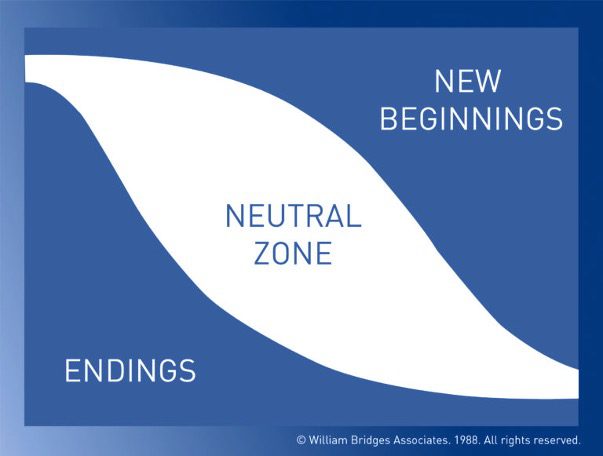
Applying Bridges’ Transition Model to the COVID-19 crisis, most of us are now in the neutral zone. We understand there are changes, and the novelty of the situation has started to wear off. We are looking ahead and asking questions. But while there may be a tendency to rush straight through to the end zone, the neutral zone actually poses an opportunity for innovation and thinking anew about how we work and live.
For leaders today, we should use this neutral zone as a time to reflect, explore, and be curious about our prior ways of doing things. Are there opportunities to improve, innovate, and adjust? It is no coincidence that some of the most cutting-edge companies have birthed new creations through chaos in their transition to a new normal.
So, if you’re working with teams, embrace the neutral zone as a field of opportunity to explore new options. Searching for new opportunities may not mean a complete restructuring of your business. It may be as simple as small changes to drive customer value or boost efficiency, or even resolving to do more of what you love.
If anything is certain with COVID-19, it’s uncertainty. Let’s not accelerate too quickly toward our new beginnings. We may miss a golden opportunity to bring something really amazing into the world, our organization, our teams, or our families.
To learn more about making the most of change, you can check out William Bridges’ book, Managing Transitions on Amazon or find a helpful summary here.
Conquering Courageous Conversations: 5 Practices to Keep in Mind.
Courageous conversations. For many leaders the thought of having difficult or tough conversations triggers fear, anxiety, and sheer panic. The problem is we’re wired to either get angry and argue, or we retreat to a passivity or distancing behavior. Neither are good solutions. And yet my experience with leaders is that leaders can increase their effectiveness individually, and with their teams, if they can start to model and coach others on how to have these conversations in a way that doesn’t send people running in fear.
And so, I want to share strategies and tactics that work well when facilitating these tough, emotionally packed conversations. Here are five things that will up your game:
- Focus on purpose and outcomes – focus on what you want to achieve individually, and collectively, with the other person. Effective leaders will directly address why they’re having the conversation and what they hope to achieve (a creative stance). This approach helps people get on a future-focused, forward trajectory vs. getting bogged down in the problems, differences, tension points, etc. (a reactive stance).
- Expand your perspective – we use a beach ball in our leadership sessions, and we ask each leader to hold the beach ball up close; and then we ask what they see – the response is typically “blue, red, green – one color.” Then we have them move the ball outward, so they can see the entire ball. What we stress is leaders need to explore other perspectives, and viewpoints. We have a tendency to see blue, red, orange – and we can’t see the bigger picture. Curiosity is a critical leadership skill to help “see other colors.” Curiosity sounds like: “I’m curious where you’re coming from…”; “I’m interested in how you came to that conclusion”; and “I am frustrated with the situation as well. Challenge me on what I’m seeing going on.”
- Suspend or avoid judgment and blame – If you want to trigger another person into a reactive, fearful, defensive state, all you have to do is start placing blame. With these conversations, it’s highly likely people will get into a defensive mode; and so, it’s important to be aware of judging and blaming. A practice to counter this tendency is to reflect on how you’ve contributed to the issue, and then take responsibility for what you own. It’s called personal accountability. When leaders take the lead in this area, others will often step forward and speak to what they are responsible for as well.
- Use the “Third Story” to set up the conversation – the Third Story is a strategy/tactic introduced in the book, Difficult Conversations by Douglas Stone, Bruce Patton, and Sheila Heen (highly recommend). The Third Story challenges leaders to step back from the situation and describe the issue as if they were a third-party, mediator type, looking at the situation objectively; and then describing the situation from that third-party perspective. What we’ve found is this approach helps people tee-up the issue with less emotion. See chapter 8 in Difficult Conversations.
- Be conscious, and I mean very conscious, about what’s going on with you – with our clients we talk a lot about conscious leadership, self-awareness, and recognizing the impact that your inner game has on your outer game. My last point is, be aware of what’s going on in you. Be aware of whether you’re feeling threatened, frustrated, fearful, tense? Be aware of emotions such as frustration, fear, anxieties, anger, etc. When you’re not in present mode and self-aware, you will not be successful in applying the ideas presented in #1-4.
Reformulate Your Schedule to Boost Productivity and Get Your Life Back
Productivity is perhaps one of the most sought-after things of the modern day. Our work lives have trespassed upon our personal hours, and time is an incredibly valuable resource. Moreover, mobile phones, email, social media, and the like have created innumerable distractions that make getting work done that much harder. If you’re like me, some days you find yourself delaying the big project until you can get all the little ones out of the way, and before you know it it’s 3 pm and you haven’t accomplished what you needed to get done. Add the afternoon drowsiness that follows and soon you find yourself clearing your calendar for tomorrow in hopes of achieving your project then. It can be a constant cycle, and yet all of us at one point or another fall victim. It isn’t procrastination in its truest sense, but poor prioritization can be just as unproductive.
So how do you spur creative thinking, efficiency, and productivity? An author by the name of Donald Miller has come up with a way to help us boost productivity in our daily lives that I think holds tremendous value. Miller was struggling with similar challenges as named above, and was in dire need of a creative boost to help get his writing career back on track. Lucky for you and me, Miller did the heavy lifting for us, reading countless books on the psychology of productivity and what drives us to accomplish certain tasks. He compiled his findings into a comprehensive Storyline Productivity Schedule that explains the theory and process in full. For the purposes of this post, however, I’m going to lay out what I believe to be his most valuable and applicable points:
1. Do your most important project first. Miller recommends that you attack your most pressing project first thing in the day. Establish a morning ritual, limit the points of contact with others, sit down, set a timer, and get to work. Thus, unless your project requires you to correspond via email, that means that email should not be the first thing you do in your day (though we all find ourselves checking email first!) There are a few advantages in doing so. One, your brain is the most alert and refreshed first thing in the morning, and thus likely to produce some of your best quality work. Two, it limits the possibilities of distractions that can majorly hamper productivity if its earlier in the morning. Three, it reduces the possibility of experiences that threaten to throw us off our rails, like a frustrating conversation with a coworker or a text message that rubs you the wrong way.
2. Number your three biggest projects in order of importance, and separate them from your other to-do’s. I mentioned this briefly in my last post, but let me expand upon this further, as I believe it is truly important. By separating the to-do’s (like responding to an email, picking up dry cleaning, etc.) from your important projects, you limit the possibility that your whole day slips by you without having done anything that is truly pressing and important. That requires, of course, that you dedicate time to your projects before anything else, or work in some to-do’s between projects to give your brain a break before setting a timer and beginning your next project. Miller recommends you limit your number of projects to three, as anything beyond that is likely to result in a shallow level of engagement and a large amount of task switching.
3. Track the time you spend on each project and log it in your calendar/planner. I can’t tell you the number of times that I have sat down and worked diligently on a project, only to not quite finish it and feel this awful lack of accomplishment. I am the guy that loves to finally check the box — the problem is that we can’t always do that for all projects that we work on throughout the day (don’t we wish!). However, what we can do is track the time that we spend (I like to set a timer for at minimum an hour) and log that as we work on each project. Doing so brings two points of value. One, there is still an inherent sense of accomplishment in dedicating time in your day to a project and being able to write that down. Two, by setting a period of time and keeping track, you are more likely to limit distractions and make that time valuable. It’s a win-win, and something that has dramatically changed how I think about my day and the amount of work that I can get done in a sitting.
Believe me when I say that these recommendations have the ability to absolutely change your day – boosting both quality of output as well as minimizing the time spent drudging through projects. If you are curious about more of Miller’s work and the other intricacies of his productivity schedule, I highly encourage you to click the link above and check it out for yourself. He even has templates that you can print for free that will help you structure your day in the way outlined above, plus other features that he cites add value to your level of productivity. At the very least, try the three points I have laid out above and take back those valuable hours of your day!


